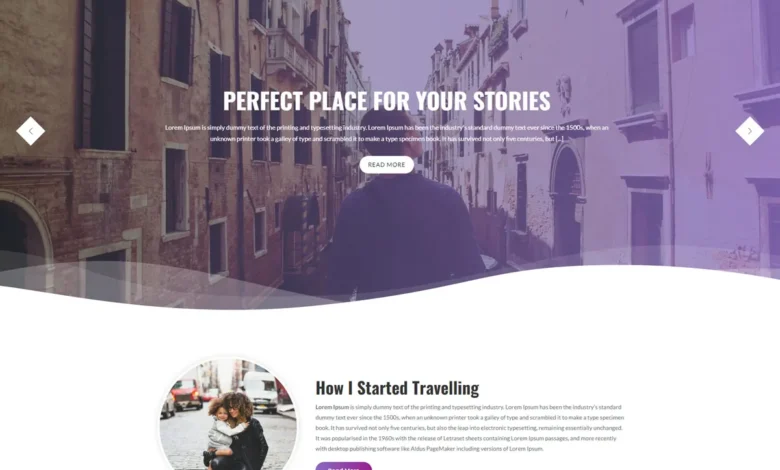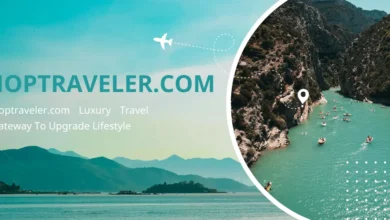New Travel Blog: Get Inspired for Your Next Adventure

Are you passionate about travel and ready to share your experiences with the world? Starting a new travel blog is an exciting endeavor that allows you to document your adventures, connect with fellow travelers, and potentially even turn your passion into a profitable business. In this comprehensive guide, we’ll walk you through everything you need to know to launch your new travel blog successfully.
Introduction to Travel Blogging
What is a Travel Blog?
A travel blog is a digital platform where individuals share their travel experiences, tips, and insights with readers. From destination guides to personal anecdotes, travel blogs offer a wealth of information and inspiration for fellow travelers.
Benefits of Starting a Travel Blog
Launching a travel blog opens up a world of opportunities, both personally and professionally. Not only does it provide a creative outlet for sharing your adventures, but it also allows you to connect with like-minded individuals, build a community, and even generate income through various monetization strategies.
Getting Started with Your New Travel Blog
Choosing Your Niche and Audience
Before diving into the world of travel blogging, it’s essential to identify your niche and target audience. Whether you’re passionate about budget travel, luxury vacations, or off-the-beaten-path destinations, defining your niche will help you tailor your content to appeal to your ideal readers.
Selecting a Blogging Platform and Domain Name
Once you’ve identified your niche, it’s time to choose a blogging platform and domain name for your new travel blog. Platforms like WordPress, Blogger, and Squarespace offer user-friendly interfaces and customizable templates, making it easy to create a professional-looking blog. Additionally, selecting a memorable and SEO-friendly domain name is crucial for attracting visitors to your site.
Designing Your Blog and Creating Engaging Content
The design of your travel blog plays a significant role in capturing and retaining the attention of your audience. Consider factors such as layout, color scheme, and typography to create a visually appealing and user-friendly website. When it comes to content creation, focus on providing valuable and engaging information that resonates with your readers, whether it’s destination guides, travel tips, or personal stories.
Planning Your Content Strategy
Brainstorming Blog Post Ideas
Generating fresh and creative content ideas is key to keeping your travel blog engaging and relevant. Draw inspiration from your own travel experiences, research trending topics in the travel industry, and consider the needs and interests of your target audience when brainstorming blog post ideas.
Developing an Editorial Calendar
Consistency is key when it comes to blogging, so it’s essential to develop an editorial calendar to keep your content organized and on schedule. Determine how often you’ll publish new posts and plan your content accordingly, taking into account seasonal trends, holidays, and upcoming events that may impact your travel plans and blog schedule.
Building Your Online Presence
Search Engine Optimization (SEO) for Travel Bloggers
Optimizing your travel blog for search engines is crucial for increasing visibility and attracting organic traffic to your site. Conduct keyword research to identify relevant keywords and phrases related to your niche, and incorporate them strategically into your blog posts, titles, and meta descriptions to improve your search engine rankings.
Social Media Marketing Strategies
Social media is a powerful tool for promoting your travel blog and connecting with your audience. Establish a presence on platforms like Instagram, Facebook, and Twitter, and share engaging content, interact with followers, and participate in travel-related hashtags and conversations to expand your reach and grow your following.
Collaborating with Other Travel Bloggers and Influencers
Collaborating with fellow travel bloggers and influencers is an effective way to expand your audience and reach new readers. Look for opportunities to collaborate on joint projects, guest blog posts, and social media campaigns, and leverage the collective expertise and reach of your network to grow your travel blog’s visibility and influence.
Monetizing Your Travel Blog
Understanding Monetization Options
While starting a travel blog is a labor of love, there are various ways to monetize your site and turn your passion into profit. From affiliate marketing and sponsored content to display advertising and digital products, explore the different monetization options available to travel bloggers and choose the strategies that align with your goals and values.
Creating a Revenue Stream with Affiliate Marketing
Affiliate marketing is a popular monetization strategy for travel bloggers, allowing you to earn a commission for promoting products and services related to your niche. Partner with travel brands, booking platforms, and tour operators that align with your audience’s interests and preferences, and incorporate affiliate links into your blog posts and content to generate passive income.
Negotiating Sponsored Content Deals
Sponsored content offers another avenue for monetizing your travel blog, allowing you to collaborate with brands and tourism boards to create sponsored posts, reviews, and promotional campaigns. When negotiating sponsored content deals, prioritize authenticity, transparency, and alignment with your audience’s interests and values to maintain the trust and credibility of your blog.
Growing Your Travel Blog Audience
Engaging Your Audience with Compelling Visuals
Visual content plays a crucial role in captivating your audience and bringing your travel experiences to life. Invest in high-quality photography and videography equipment, and use visuals to complement your written content, showcase destinations, and evoke emotions that resonate with your readers.
Building a Community Around Your Blog
Building a community around your travel blog is essential for fostering engagement, loyalty, and trust among your audience. Encourage reader interaction and feedback, respond to comments and inquiries promptly, and create opportunities for readers to connect with you and each other through forums, social media groups, and online communities.





